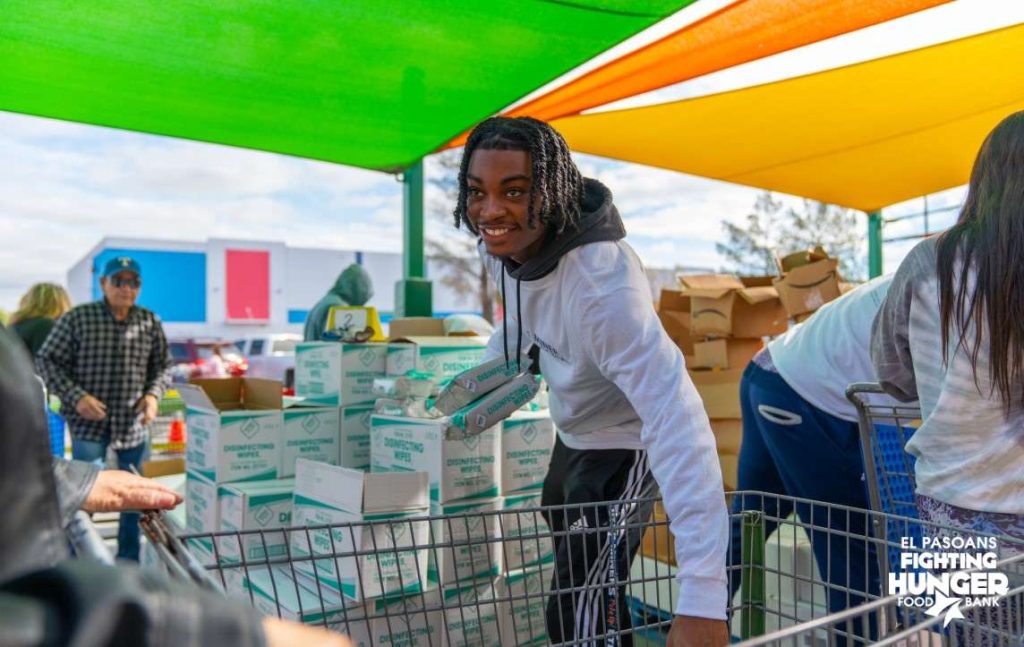

Did you know that 1 in 7 Texans and 1 in 10 Arizonans are facing hunger at any given time? Hunger and food insecurity are more pervasive than one would think, which is why food banks serve an indispensable role in helping connect people to food and other resources they need to thrive.
That’s why Copenhagen is proud to be teaming up with five food banks in Arizona and Texas – St. Mary’s Food Bank, the Community Food Bank of Southern Arizona, the San Antonio Food Bank, the Central Texas Food Bank, and El Pasoans Fighting Hunger – for the third annual 5&5 Charity Food Drive. By donating 5% of gross sales to local food banks, as well as offering a 5% discount to customers who donate 5 nonperishable food items, we hope to raise $60,000 to fight hunger in our communities.
Indeed, food banks rely on millions of donations a year from individuals, farms, retailers, and more to perform their vital work. Although nonperishable foods, monetary gifts, and time (in the form of volunteering) are three of the most sought-after things you can give to your food bank, it doesn’t end there. Below, learn more about this year’s most-needed nonperishables, as well as some items you may not have known you can donate to your food bank. At the end of this post, enjoy some fun anecdotes about the most unusual donations your local food banks have received!
The following is a combined list of highly needed nonperishables requested by our five partner food banks:
All items donated should be unopened and not past their expiration date. “Volunteers spend a lot of time checking donated goods for damage or expiration dates that have passed – we want to follow all food safety rules,” explains Norma Cable, PR Manager at the Community Food Bank of Southern Arizona. “We encourage people to take a list of our most wanted food items to the grocery store,” she recommends. “Pick up a jar of peanut butter or a few! A can of veggies, or a case. That way, we know the food is coming to us in good condition.”
In addition to nonperishables, you may be surprised at the sheer variety of items your local food bank can receive. Here’s a partial list.
If you’d like to give perishable foods to the food bank, reach out and ask what they are accepting, as it varies depending on the organization. For instance, the Community Food Bank of Southern Arizona accepts donations of fresh meat and produce. “I can receive a side of beef if it has been stamped by the USDA,” says Lou Medran, Sourcing Manager at CFB. “I can also take garden vegetables, or fresh citrus that has been picked off the backyard tree.”
St Mary’s is another food bank that accepts citrus donations during the late winter and spring – they can even have volunteers glean your citrus trees for you, on a limited basis. “Another lesser-known item we welcome at St Mary’s is fry bread mix,” says John Drake, Corporate Giving Officer. “This is an important part of our tribal emergency food boxes that go to tribal partners in Arizona.”
To be sure, food banks can be highly flexible and open to receiving a wide range of foods. The Central Texas Food Bank accepts frozen and refrigerated foods as well as produce, while the San Antonio Food Bank can take “any food items that are sealed, have a manufacturer label, and have nutrition facts,” according to Rachel Morris, Philanthropy Manager at SAFB.
If you’re a hunter and live in the San Antonio area, you may be interested to know that you can donate wild game to the food bank. “The San Antonio Food Bank is proud to accept tagged, field-dressed wild game from hunters and ranchers across Texas through our Hunters for the Hungry program,” says Rachel Morris. This unique program currently takes donations of various deer species, such as fallow, mule, and whitetail deer.
Because low-income communities can struggle with affording a range of necessities, many food banks – such as the Central Texas Food Bank, San Antonio Food Bank, Community Food Bank, and El Pasoans Fighting Hunger – take donations of personal care and baby items like toiletries and diapers. It’s also not uncommon for food banks to accept miscellaneous necessities like clothing, school supplies, pet food, pet supplies, and more.
Sonya Saunders, Director of Fund Development at El Pasoans Fighting Hunger, says, “We participate in grocery rescue with several local supermarkets, so we receive various household items, toys, and even cut flowers.” In a similar vein, the Central Texas Food Bank will accept “almost anything they can distribute to [their] agency partners, including clothing and new pillows,” says Bryan Trinh, Community Engagement Coordinator at CTFB.
Did you know that you can donate vehicles to the Community Food Bank of Southern Arizona – regardless of whether the vehicles are new, used, or no longer running? Partnering with the nonprofit Charitable Adult Rides & Services, the Community Food Bank can accept cars, trucks, motorcycles, RVs, and even boats!
The Central Texas Food Bank can take corporate and industry-based donations of refrigerators, freezers, reusable shopping bags, office furniture, and office supplies. Qualified businesses can also donate media sponsorships, printing services, and staff training to help the food bank’s mission.
Finally, enjoy this roundup of the most uncommon items our partner food banks have ever received:
From canned soup and citrus to clothing and cars, food banks work tirelessly to ensure that food and other supplies can reach or otherwise benefit those in need. Consider donating to your local food bank today to help their cause. Participate in Copenhagen’s 5&5 Charity Food Drive through April 14, 2024, or visit the website of your nearest food bank – St. Mary’s Food Bank, the Community Food Bank of Southern Arizona, the San Antonio Food Bank, the Central Texas Food Bank, and El Pasoans Fighting Hunger – to find more ways to assist.